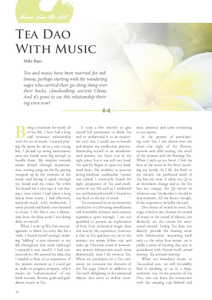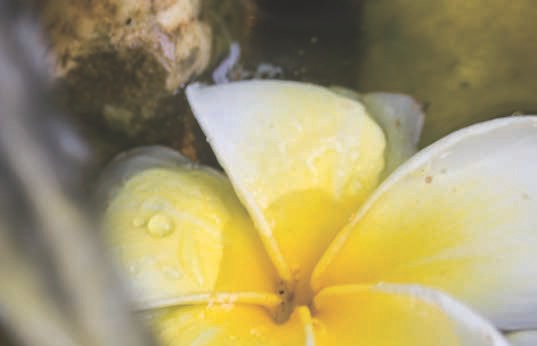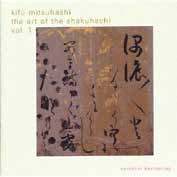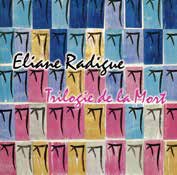
 |
|

Being a musician for nearly all of my life, I have had a long and intimate relationship with the art of music. I started playing the piano by ear as a very young boy. I picked up string instruments once my hands were big enough to handle them. My impulse towards music shined through improvisation, writing songs on the fly, getting wrapped up in the moment of the music and letting it speak through my hands and my voice. Yet when Tea found me a year ago, it was during a time where I had taken a long hiatus from music. I had effectively replaced music with meditation. I rarely played and barely even listened to music. I felt like it was a distraction from the deep work I was doing daily on myself.
When I took up Wu De's encouragement to drink Tea every day for a week, I found myself strongly resisting "adding" a new element to my life throughout that week (although I enjoyed it very much!). I had constructed my life around the idea that I needed as bare of an experience of the present moment as I could get in order to progress properly, which meant no "enhancements" of any kind: incense, flowers, gods and goddesses, music or Tea.
It took a few months to give myself full permission to drink Tea and to understand it as an important tool that I could use to benefit and deepen my meditation practice. Restricting myself to an unadulterated present, my heart was in the right place, but it was still very hard. Tea quickly began to open my hardened heart. My inability to practice loving-kindness meditation (metta) was solved. I eventually found the right proportion of Tea and meditation in my life and as I mellowed out and balanced myself, I found my way back to the joy of music.
Tea consumed in an environment conducive to cultivating mindfulness will invariably enhance one's sensory experience quite strongly. I am not qualified to present an explanation of how Tea's alchemical magic does this exactly. My experience, however, is that as Tea quickens my tie to the present, my senses follow suit and wake up. I become aware of momentary sensory information much more dramatically than I do without Tea. When we participate in a Tea ceremony, we consume the elements of the Tea stage (chaxi) in addition to Tea itself, delighting in the presented objects that serve to imbue reverence, presence and calm awakening to our senses.
In the process of participating with Tea, I am drawn into the chaxi - the sight of the flowers, teaware and table setting, the smell of the incense and the brewing Tea. When I pick up my bowl, I feel the heat of the water in the bowl touching my hands. As I lift the bowl to my mouth, the profound smell of Tea hits my nose. It alerts my Qi to an imminent change and as the Tea hits my tongue, the Qi moves in whatever way Tea decides it should in that moment. All the better, though, if this experience includes the ears!
The choice of sound in one's Tea stage, whether one chooses the sound of music or the sound of silence, can distinctly set the course for emotional reward. Living Tea does not directly provide the hearing sense with information, imparting itself only to the other four senses, yet it yields a sense of hearing that acts in accordance with Nature itself, actual hearing. Tea activates hearing.
When we introduce music to Tea-soaked ears, we will invariably find it speaking to us in a deep, authentic way. In the practice of Tea Dao, one can leave the interaction with the steeping cup behind and simply listen, perhaps as we never have before. Following the moment-to-moment movement of music in a meditative Tea-infused state, I have experienced profound insight into the nature of Reality, equivalent to that generated by purely observing sensation (vedana) in a Vipassana meditation session. These moments of insight, coupled with the opening of my heart through Tea, were the validation I needed to fully embrace the Way of Tea.
It became clear that music could act as a friend on the path of Dhamma just as well as Tea could. Both music and Tea soften the blade on the razor's edge of a life of meditation. Gratefully, my heart is now open enough to allow them the space to soften me. My meditations have deepened as a result.
Although any and all music can be experienced along with Tea, the contemplative spirit of a Tea ceremony awakens through more subtle frequencies. In musical terms, this means sound without constant, sharp dynamics.
I have compiled some of my favorite Tea music below that fits this description:

In the hands of a skilled player, the humble bamboo flute, or shakuhachi, produces nearly quintessential Tea music. The shakuhachi is capable of producing sound ranging from beautifully soothing and droning sustain to spontaneous, surprising inflections of the human breath flowing through its wooden hollowness. The instrument has a fascinating history wrapped up in stories of mendicants traveling around Japan, blowing the flute as a means of achieving enlightenment through its sound. Here, Kifu Mitsuhashi plays a selection of traditional shakuhachi compositions in the spirit of these wandering monks that will surely set an introspective tone for a Tea ceremony.

This album is a perfect, lighter companion to "The Art of the Shakuhachi". In these traditional songs for the koto, a plucked zither, you can hear the footsteps of the shakuhachi monks wandering around the Japanese countryside, perhaps stopping from time to time to prepare a bowl of Tea. I often choose to play this album when having Tea with someone for the first time.

Brian Eno, the father of "ambient music", designed this album to be continuously looped as a sound installation, specifically to alleviate the anxiety of traveling passengers in an airport terminal. The first track "1/1", in a Zen fashion, was crafted from a performance of two musicians completely unaware of one another's performance, captured in a few synchronous moments of time, slowed down and looped in various ways. The end result yields a track filled with soft textures and deep silences, beautiful and optimistic, perfect for drinking cup after cup, morning or night.

Composed over a period of eight years, three songs each one hour in length comprise Eliane Radigue's masterpiece. Written on a single analog synthesizer, the ARP 2500, these slowly moving, infinitesimally changing sounds at first appear like a kind of background music, yet quickly you will find that they demand, like the best Tea ceremonies, your undivided attention. These challenging pieces offer the best opportunity for musical enlightenment!